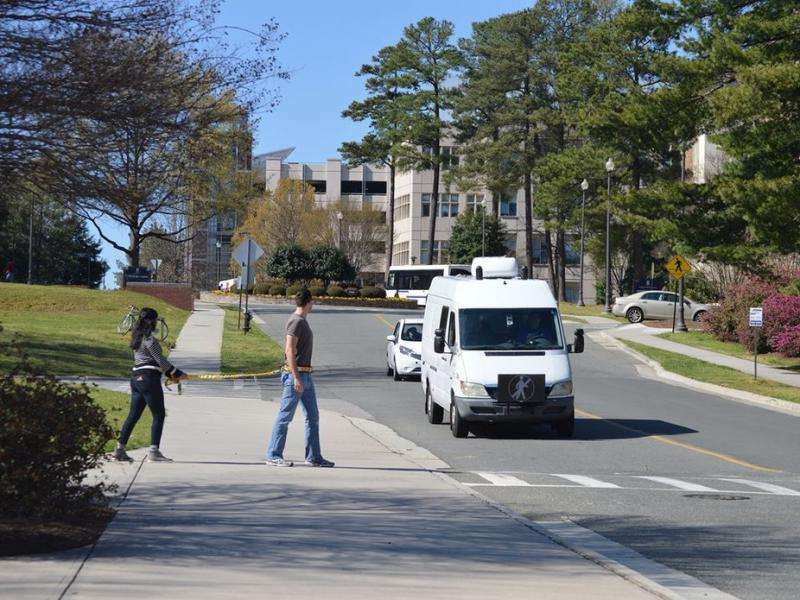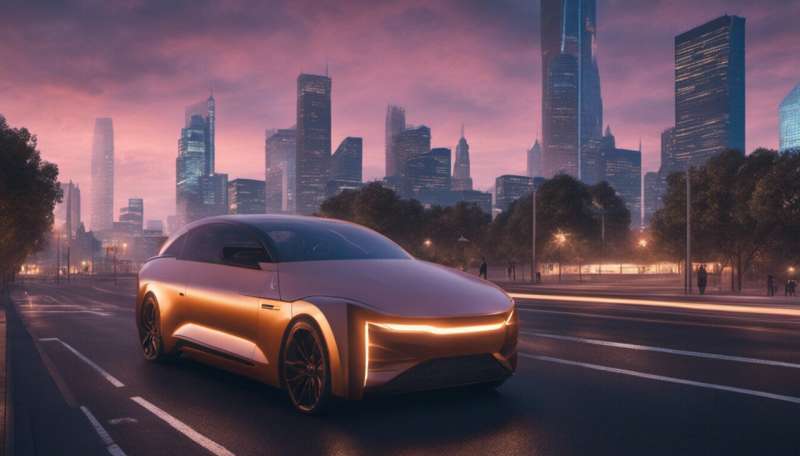Making driverless cars safe for pedestrians

Right now, there are two ways to be safe crossing a road: Wait until no cars are close by, so there's enough time to make it to the other side of the street – or communicate with oncoming drivers. As the number of pedestrian deaths on U.S. roads , up 25 percent since 2010 to , the dawn of driverless cars offers the promise of improving that sad safety record.
Whether we're at a crosswalk, a traffic light or just walking out in the middle of the road, we've learned since we were young that it's important to with the drivers of approaching cars. But that's not going to be possible with autonomous cars. Even if there's someone sitting in what would be the driver's seat, that person will be a passenger, with little – or perhaps no – control over how the car behaves. And that passenger may also be catching up on work, watching a movie or dozing off, paying no attention to what's up ahead.
People and cars will need to communicate in some other way. With no universally agreed on method for doing this, my own research, and that of a number of , and , is exploring using different types of visual signals – akin, perhaps, to a driver waving a person across the street or flashing the car's headlights to signal their yielding the right of way. Doing that turns out to be quite complicated.
Driverless car
Part of the problem depends on how people respond when they realize an autonomous car is approaching: Scholars at and the recently made news by operating vehicles on public roads with so the cars – actually human-driven – appear to be driverless. A team I'm part of at Duke University's , is also investigating how driverless cars will communicate with pedestrians.
Despite in today's transportation world, there are no standards for vehicle-to-pedestrian communications at the moment. Establishing them will be important: Common crossing signals at intersections around the country make both pedestrians and drivers safer. But we don't yet know what methods are most effective.
A sign on the roof or the front bumper – or somewhere in between – could light up, but what would it say? Would it need to communicate in multiple languages, or should people agree on a standard nontext symbol, like those in airports, so anyone could understand? What about playing a sound – would the car speak, or play a musical code? Whatever the signal, it has to be understandable across different age groups, education levels and locations.
What should signs look like?
Presenting a text-based phrase like "" may work for a single pedestrian crossing in front of a single car on a two-lane road. But there are many more complicated scenarios: When crossing a four-lane road, does "safe to cross" mean a car isn't approaching in the next lane? When multiple pedestrians are crossing from opposite sides of the street, to which of them is the car's "safe to cross" message directed?

The appearance of these signs is also important. If a message like "safe to cross" is to be read clearly at 100 feet – the standard for our current stationary crossing signals – the letters will need to be at least six inches high. That would require putting them on a . If they're on moving vehicles, the messages would likely need to be even larger.
Of course, a sign is useless if nobody looks at it. That's a concern raised by a study we completed last year, in which we on the front of a van that we disguised to look as if it had no human driver. We found that used the displays to help them decide when to cross. Most people relied on their old crossing strategies, like evaluating the speed and distance of oncoming vehicles to make sure they would have time to cross.
As human-driven cars become less common, labs like ours – and those in Virginia and California – will continue studying how pedestrians respond, so we can better ensure everyone's safety. Those efforts are likely to mean more people encounter a car driven by a scientist dressed as a car seat.
Provided by The Conversation
This article was originally published on . Read the .![]()


















